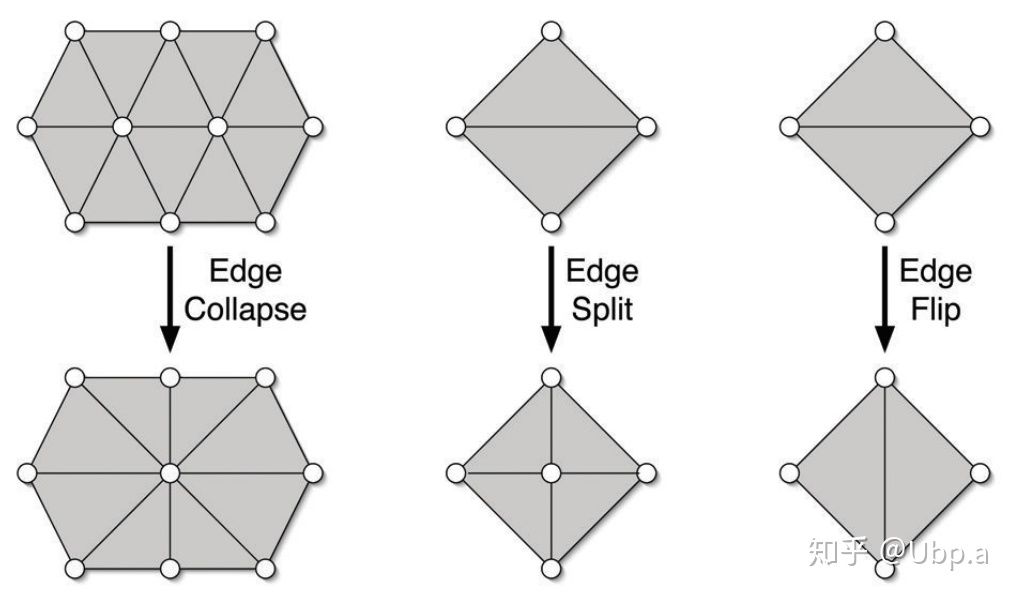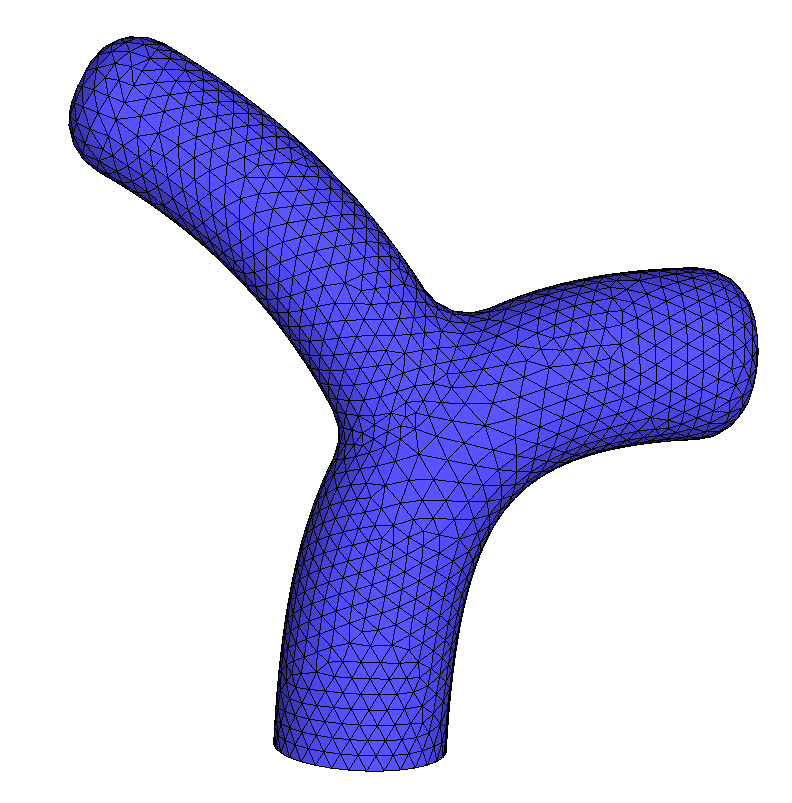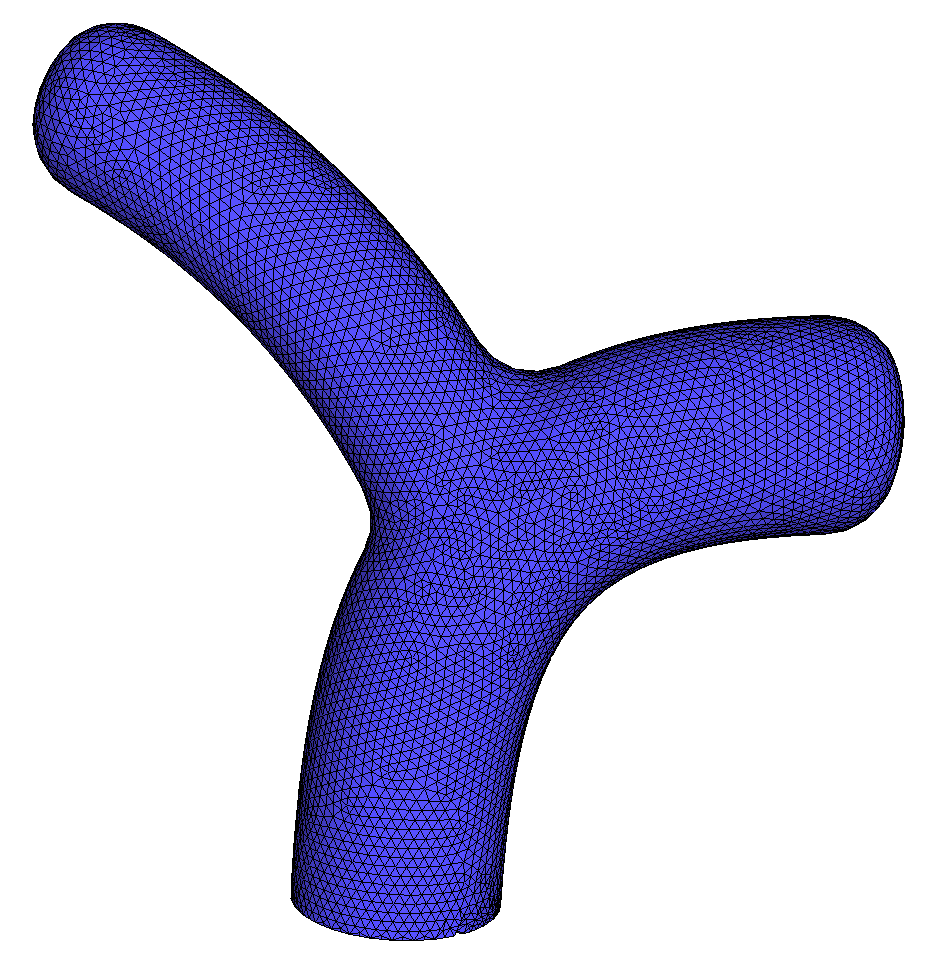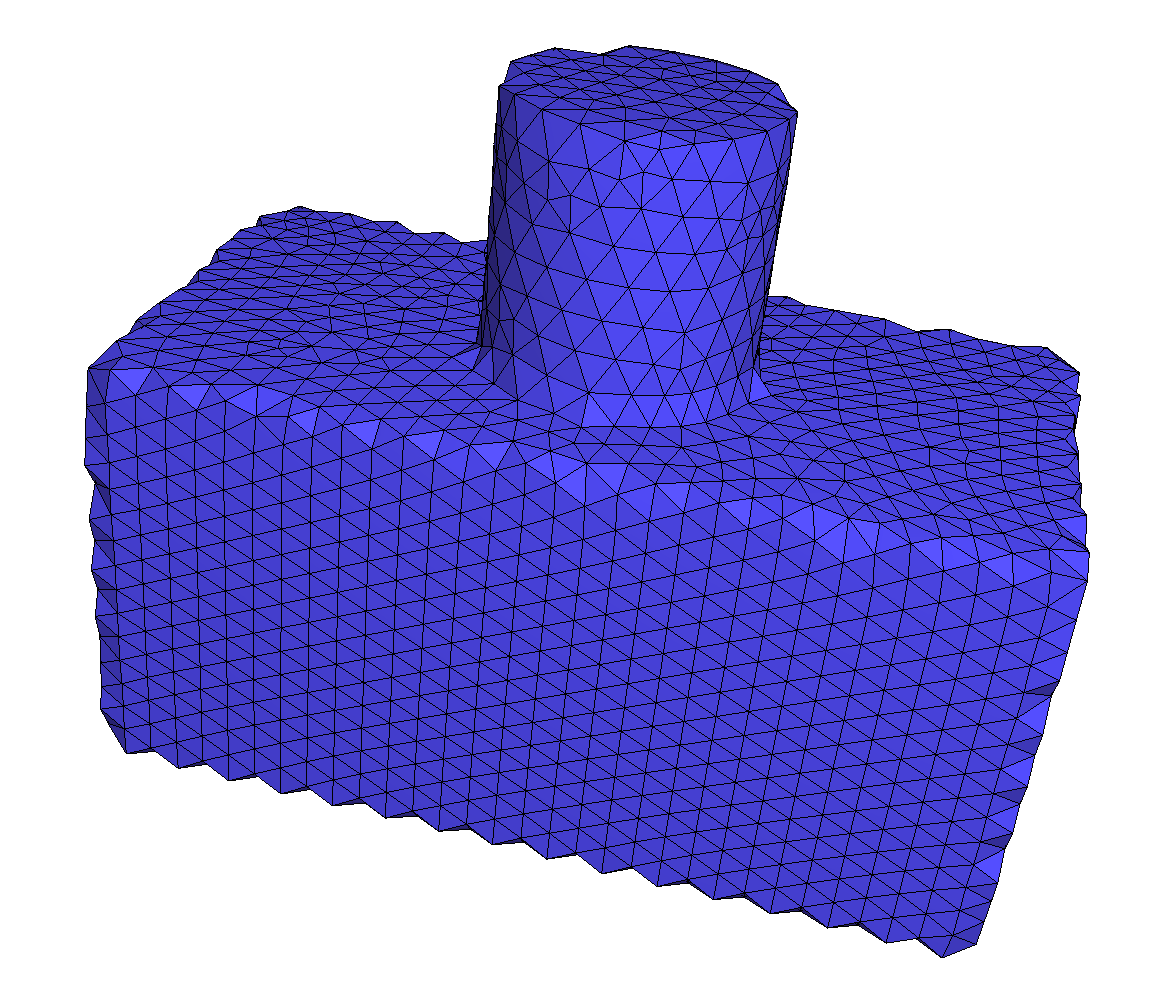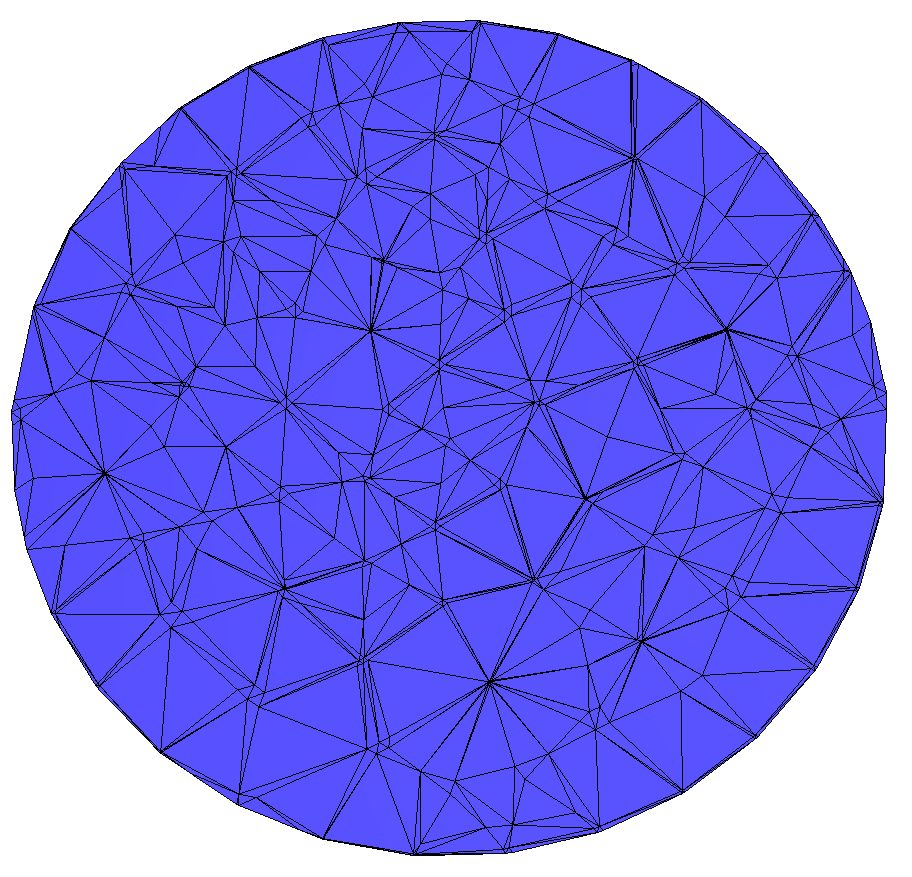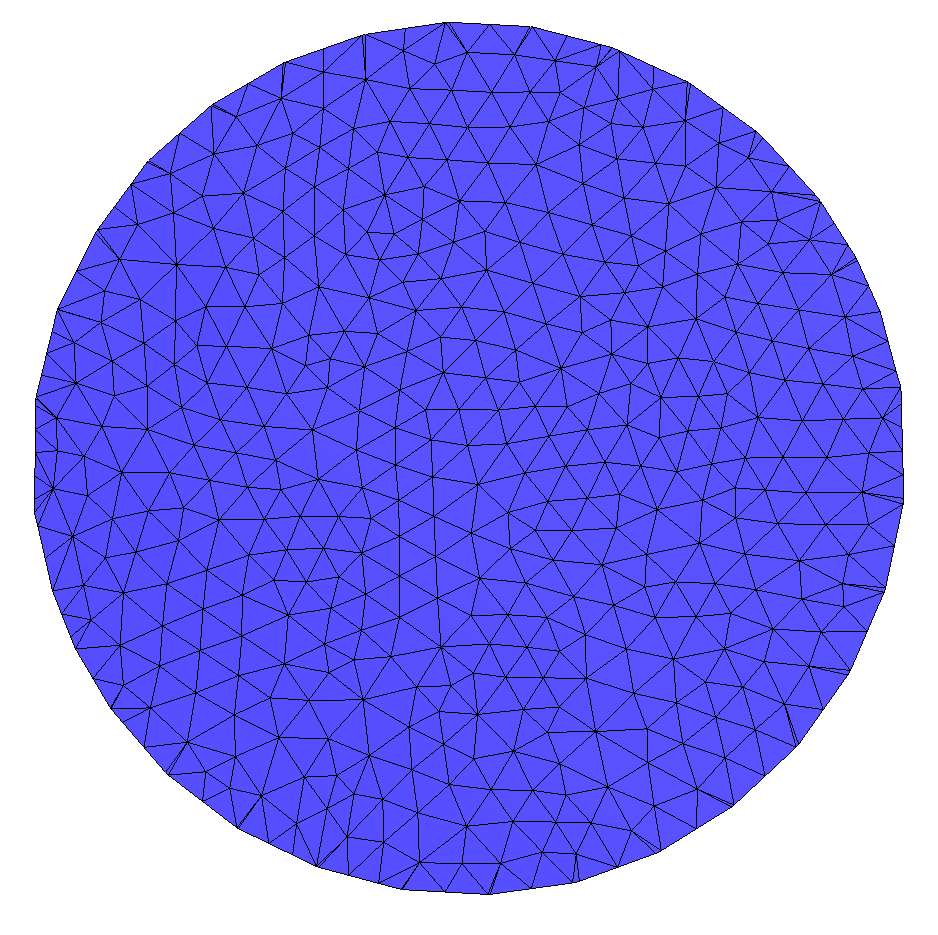原理 算法伪代码如下:
1 2 3 4 5 6 7 8 9 remesh (target_edge_length)4 /5 * target_edge_length4 /3 * target_edge_lengthfor i = 0 to 10 do spilt_long_edges (high)collapse_short_edges (low, high)equalize_valences ()tangential_relaxation ()project_to_surface ()
其中target_edge_length是网格的目标长度。
涉及的三个操作如下:
spilt_long_edges 该步骤将所有长于high = 4/3 * target_edge_length的边进行 Edge Spilt 操作。
collapse_short_edges 该步骤将所有短于low = 4/5 * target_edge_length的边进行 Edge Collapse 操作,新增的点位置为边两端点的中点,另外要求新的边不会长于high = 4/3 * target_edge_length。
equalize_valences 该步骤目的是平衡顶点的度数,最佳度数 optimal valence 为
通过使用Edge Flip进行顶点度数的增加和减少。
tangential_relaxation和project_to_surface 该步骤解决三角形面积问题,实现网格面积的均匀化。
以上内容转自:Isotropic Remeshing - 知乎 (zhihu.com)
CGAL代码实现 1 2 3 4 5 6 7 8 9 10 11 12 13 14 15 16 17 18 19 20 21 22 23 24 25 26 27 28 29 30 31 32 33 34 35 36 37 38 39 40 41 42 43 44 45 46 47 48 49 50 51 52 53 54 55 #include <CGAL/Exact_predicates_inexact_constructions_kernel.h> #include <CGAL/Surface_mesh.h> #include <CGAL/Polygon_mesh_processing/remesh.h> #include <CGAL/Polygon_mesh_processing/border.h> #include <CGAL/Polygon_mesh_processing/IO/polygon_mesh_io.h> #include <boost/iterator/function_output_iterator.hpp> #include <CGAL/draw_surface_mesh.h> #include <iostream> #include <string> #include <vector> typedef CGAL::Exact_predicates_inexact_constructions_kernel K;typedef CGAL::Surface_mesh<K::Point_3> Mesh;typedef boost::graph_traits<Mesh>::halfedge_descriptor halfedge_descriptor;typedef boost::graph_traits<Mesh>::edge_descriptor edge_descriptor;namespace PMP = CGAL::Polygon_mesh_processing;struct halfedge2edge { halfedge2edge (const Mesh& m, std::vector<edge_descriptor>& edges)m_mesh (m), m_edges (edges)void operator () (const halfedge_descriptor& h) const {push_back (edge (h, m_mesh));const Mesh& m_mesh;int main (int argc, char * argv[]) const std::string filename = "data/simple80_complete.stl" ;if (!PMP::IO::read_polygon_mesh (filename, mesh) || !CGAL::is_triangle_mesh (mesh))"Invalid input." << std::endl;return 1 ;draw (mesh, "source mesh" );double target_edge_length = 1 ;unsigned int nb_iter = 5 ;"Split border..." ;border_halfedges (faces (mesh), mesh, boost::make_function_output_iterator (halfedge2edge (mesh, border)));split_long_edges (border, target_edge_length, mesh);"done." << std::endl;"Start remeshing of " << filename" (" << num_faces (mesh) << " faces)..." << std::endl;isotropic_remeshing (faces (mesh), target_edge_length, mesh,number_of_iterations (nb_iter)protect_constraints (true )); "Remeshing done." << std::endl;draw (mesh, "remeshing mesh" );return 0 ;
关键函数 isotropic_remeshing()
1 2 3 4 5 6 template <typename PolygonMesh , typename FaceRange , typename NamedParameters = parameters::Default_named_parameters>void CGAL::Polygon_mesh_processing::isotropic_remeshing (const FaceRange & faces,const double & target_edge_length,const NamedParameters & np = parameters::default_values ()
参数名
解释
pmesh
a polygon mesh with triangulated surface patches to be remeshed
faces
the range of triangular faces defining one or several surface patches to be remeshed
target_edge_length
the edge length that is targeted in the remeshed patch. If 0 is passed then only the edge-flip, tangential relaxation, and projection steps will be done.
np
an optional sequence of Named Parameters among the ones listed below
pmesh:可以是Surface_mesh或者Polyhedron_3。
faces:可以通过faces(mesh)返回boost::graph_traits<CGAL::Surface_mesh<P>>::face_iterator的序列。其中CGAL::Surface_mesh<P>为PolygonMesh。
target_edge_length:同上述原理。
对于np参数,如下列出几个常用的
number_of_iterations:执行edge splits, edge collapses, edge flips, tangential relaxation and projection to the initial surface的迭代次数。默认值为1。
edge_is_constrained_map:包含pmesh的每个边的受约束或不受约束状态的属性映射。默认没有边被约束。
protect_constraints:如果为true,在edge_is_constrained_map (或者默认边界) 中的边在重建过程中不进行split和collapsed操作。默认为false。
注意:如果protect_constraints为true的话,受约束的边不能大于4/3*target_edge_length。因此需要在这执行isotropic_remeshing()之前先执行split_long_edges() 进行长边分割。
do_split、do_collapse、do_flip、do_project
都是布尔类型值。默认都为true。
问题与总结 在测试中,两个模型都是封闭的流形表面,故不存在边界。因此,无论protect_constraints取何值,remeshing后原模型面与面的过渡直线上的边将会变化,致使结果模型的棱边凹凸不平。为了验证上述猜想,使用带边界的三角网格进行如下测试:
可以看到,当将protect_constraints置为true时(第三张图),边界上的边受到了约束,因此remeshing后不如protect_constraints置为false(第二张图)时的均匀。
因此,为了实现闭合网格remeshing前后棱边形状不变,我们可以将棱边上的边属性映射为受约束,而其余边属于映射为不受约束,得到表面网格的edge_is_constrained_map,再置protect_constraints为true,实现对这些边的保护。
